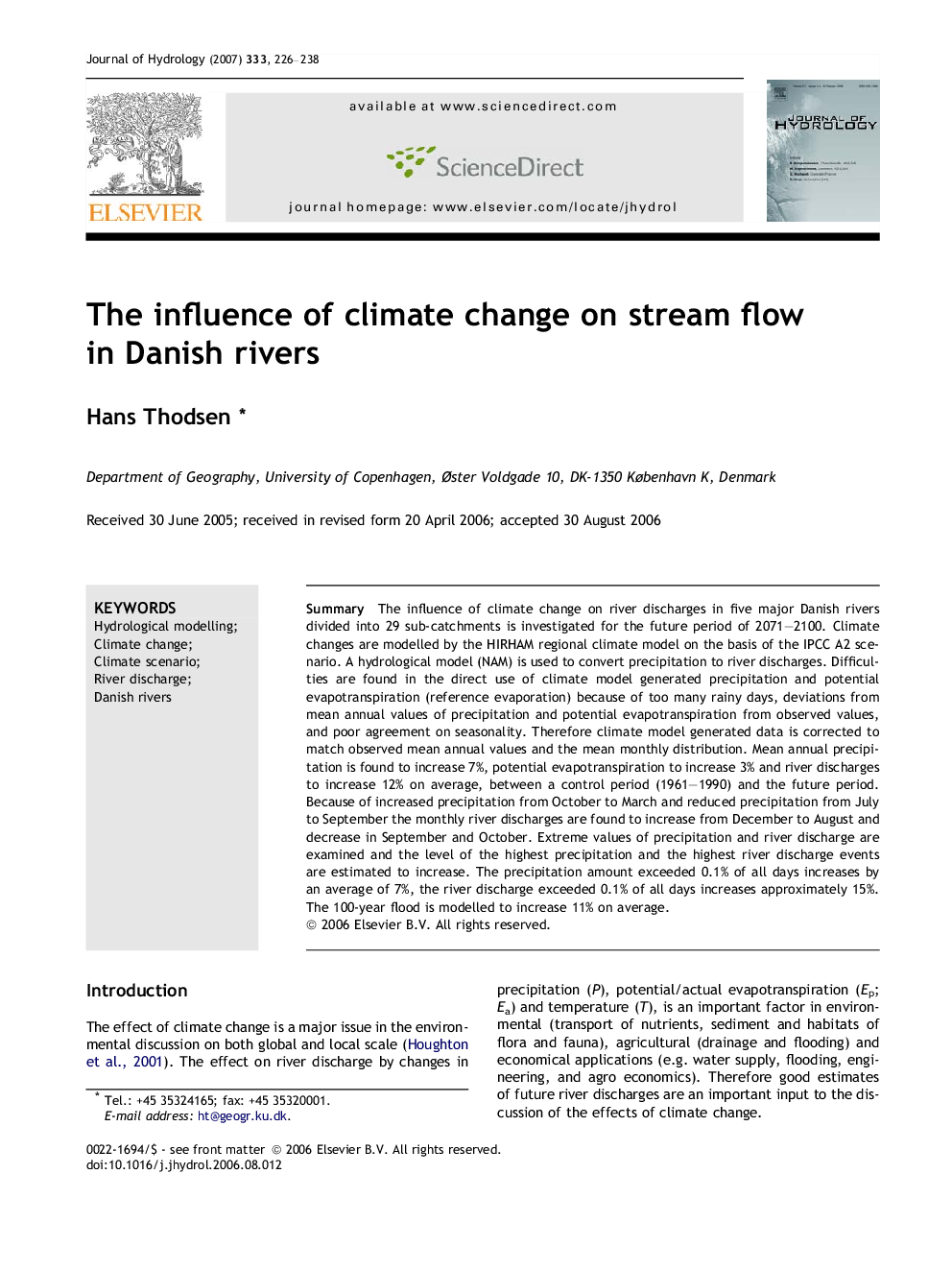| Article ID | Journal | Published Year | Pages | File Type |
|---|---|---|---|---|
| 4580025 | Journal of Hydrology | 2007 | 13 Pages |
SummaryThe influence of climate change on river discharges in five major Danish rivers divided into 29 sub-catchments is investigated for the future period of 2071–2100. Climate changes are modelled by the HIRHAM regional climate model on the basis of the IPCC A2 scenario. A hydrological model (NAM) is used to convert precipitation to river discharges. Difficulties are found in the direct use of climate model generated precipitation and potential evapotranspiration (reference evaporation) because of too many rainy days, deviations from mean annual values of precipitation and potential evapotranspiration from observed values, and poor agreement on seasonality. Therefore climate model generated data is corrected to match observed mean annual values and the mean monthly distribution. Mean annual precipitation is found to increase 7%, potential evapotranspiration to increase 3% and river discharges to increase 12% on average, between a control period (1961–1990) and the future period. Because of increased precipitation from October to March and reduced precipitation from July to September the monthly river discharges are found to increase from December to August and decrease in September and October. Extreme values of precipitation and river discharge are examined and the level of the highest precipitation and the highest river discharge events are estimated to increase. The precipitation amount exceeded 0.1% of all days increases by an average of 7%, the river discharge exceeded 0.1% of all days increases approximately 15%. The 100-year flood is modelled to increase 11% on average.
